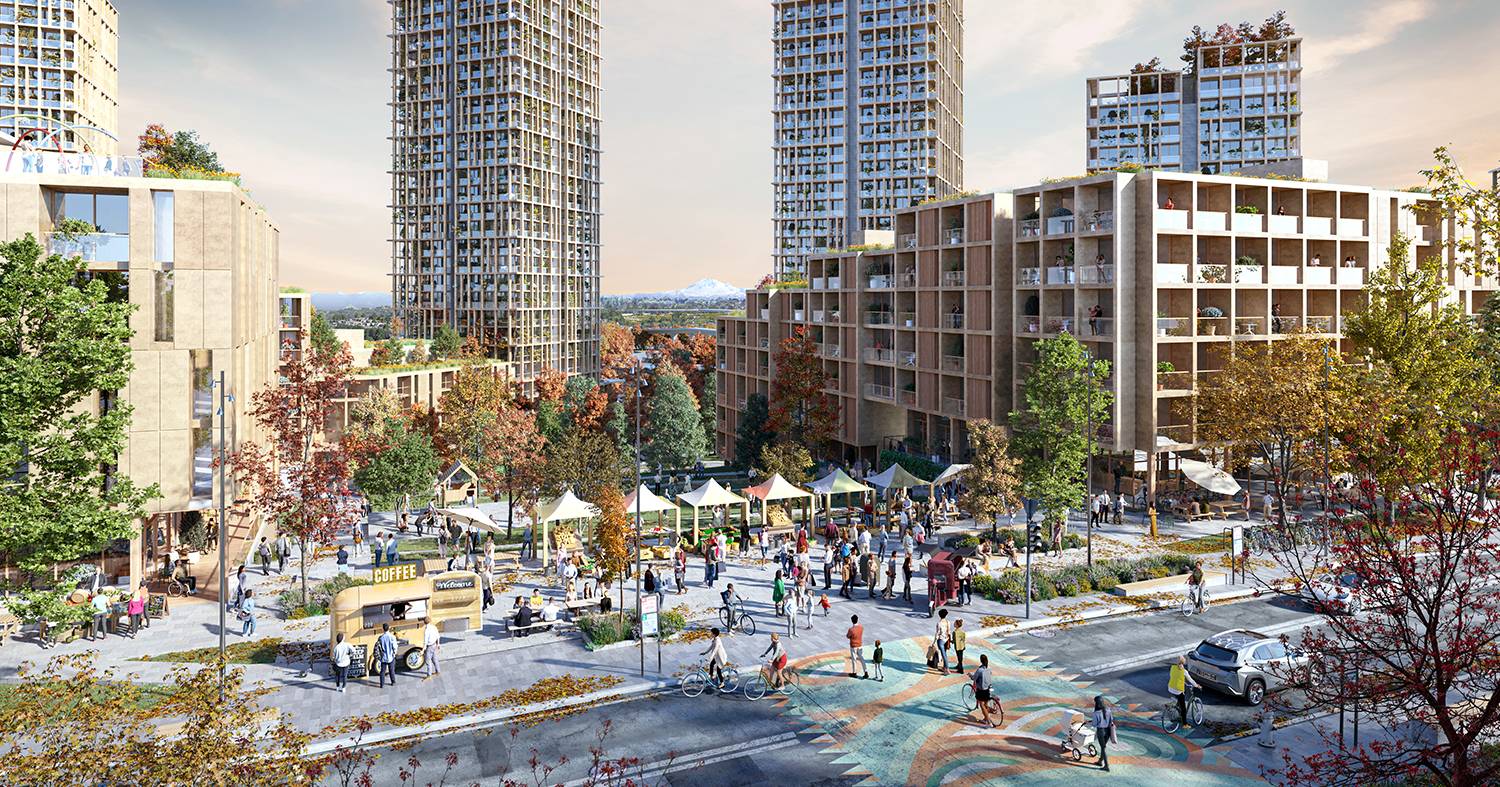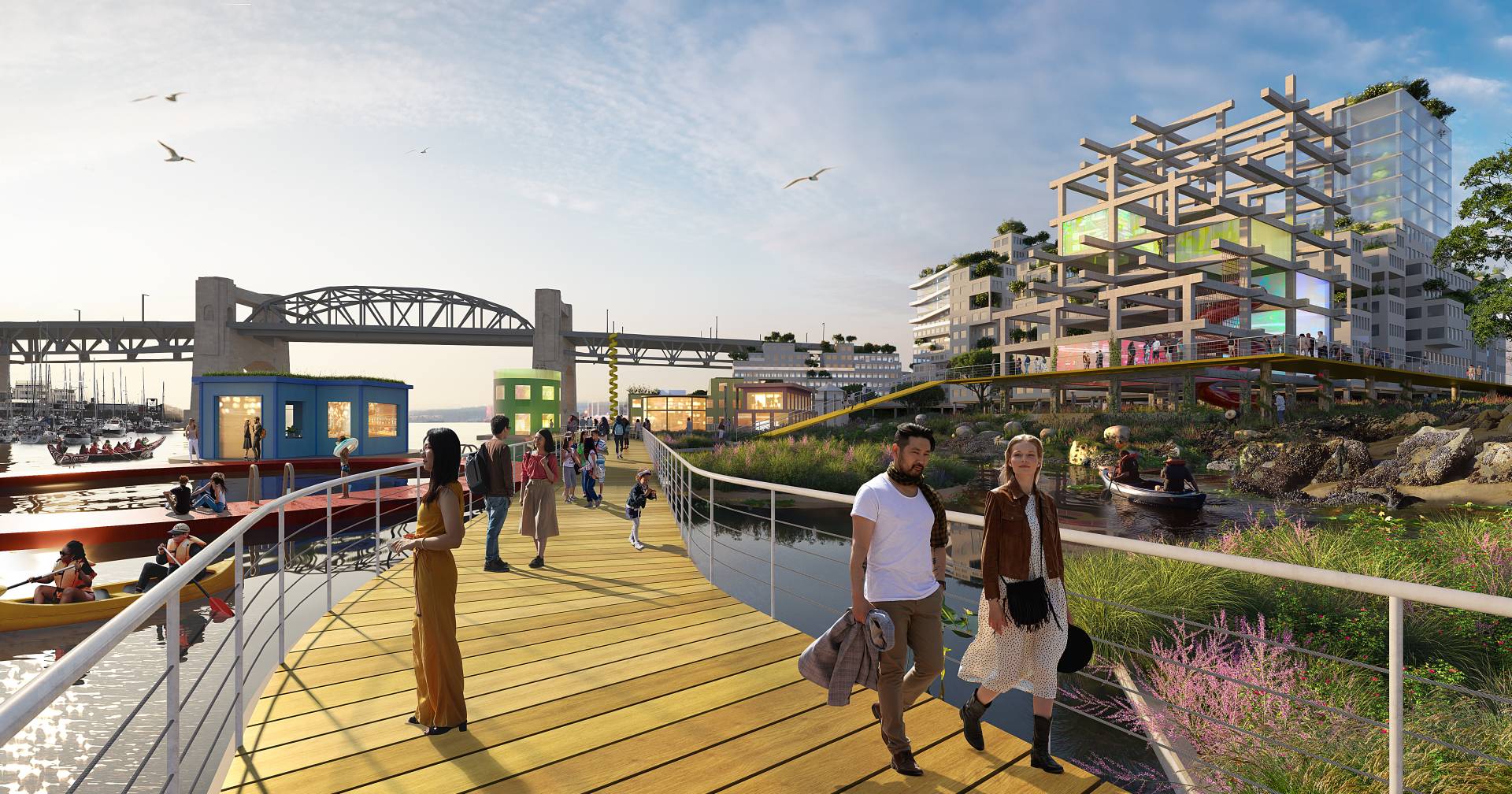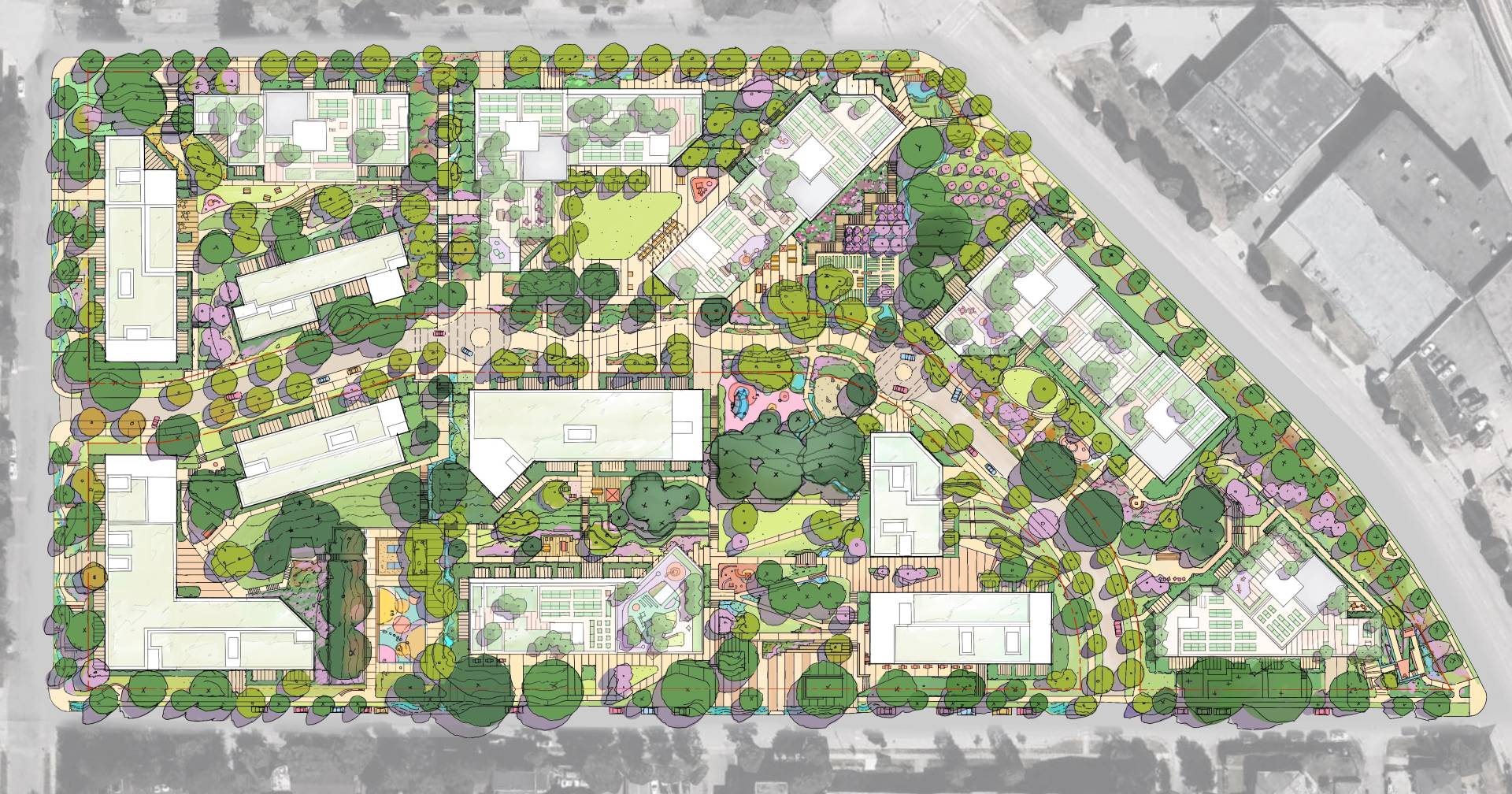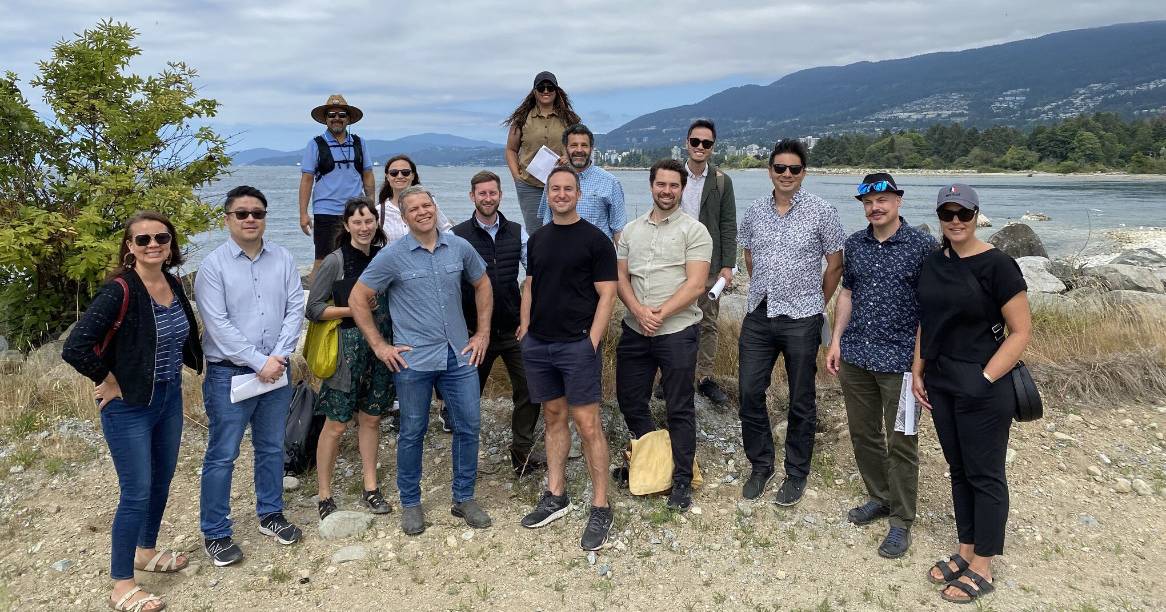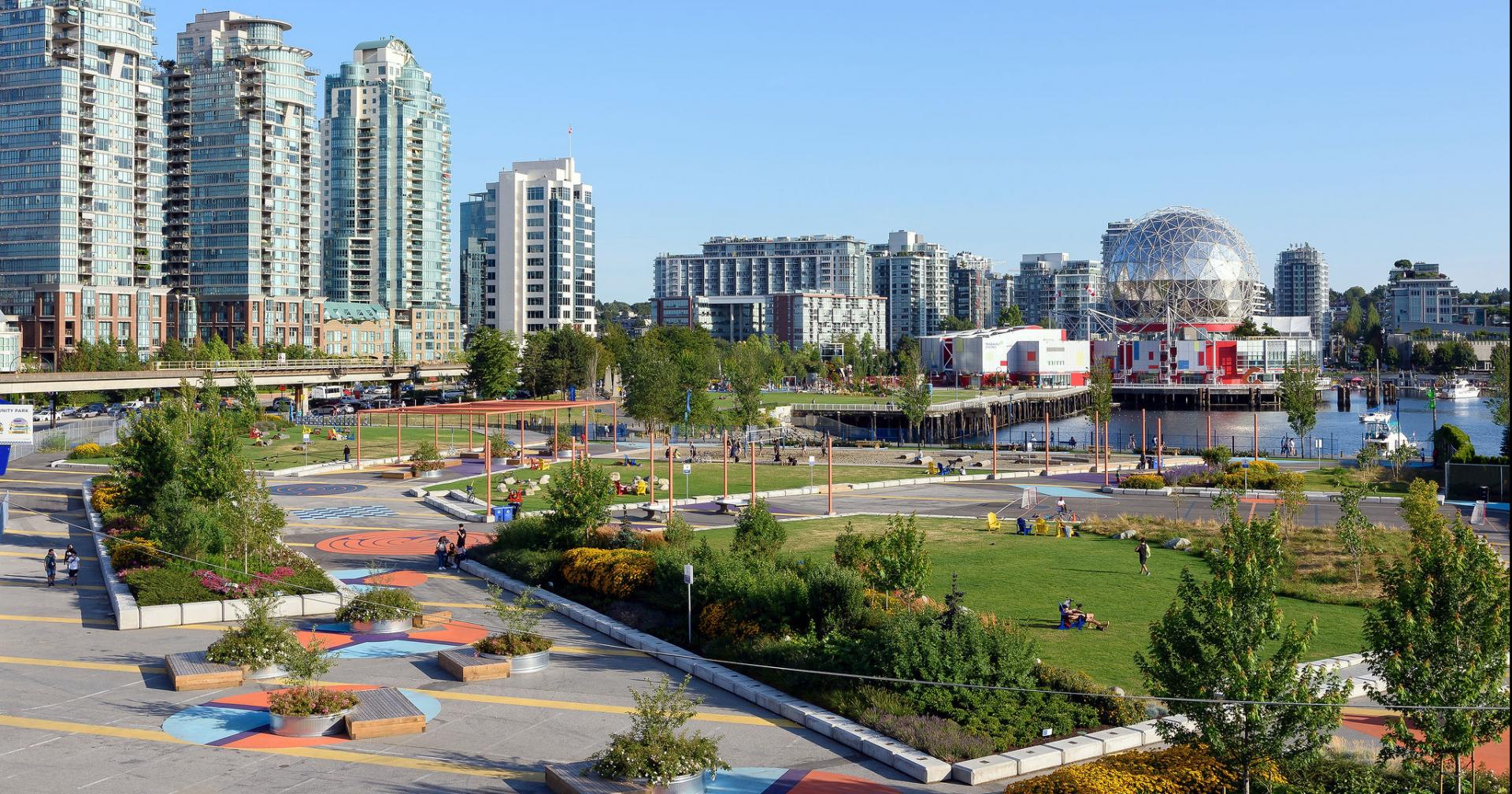Skeena Terrace receives 2024 National Urban Design Award
Published
Skeena Terrace is home to a diverse community on 4.4 hectares in Vancouver, and includes a terracing landscape designed by Cornelia Hahn Oberlander, but its 1960s-era buildings require extensive repairs. The community plan to revitalize Skeena Terrace protects and enhances the site’s urban forest, while planning for new buildings that significantly increase the supply and diversity of affordable rental housing on the site. The plan envisages an equitable community with 1,930 new units, 60% of which will be family-oriented, within a 10-minute walk of Rupert Skytrain Station.
Prioritizing tenant rights, the development minimizes off-site displacement and performs robust engagement to ensure needs are met and culture remains intact. The existing Thunderbird school and community centre are emphasized as the focal point to the neighbourhood, and enhanced through a new adjacent public plaza, childcare, and local-serving retail. At the heart of the plan, the “Skeena Hut”—an existing multi-purpose community facility—is recreated to anchor the redevelopment.
In the new development, a series of communal outdoor courtyards are sited around the existing open spaces and significant tree groves. These “neighbourhood rooms” are connected through a greenway and path network that privileges active mobility and accessibility.
Buildings are contextually sensitive and sited to mitigate steep slopes and protect existing trees; below-grade, structures are set back from on-site water courses and significant trees. The design includes a centralized public space built around a celebrated watershed feature tracing the topography of the site. This landscape-driven approach results in building site coverage under 40%.
Jury Comments:
"This intensive community plan, based on adding housing units, exemplifies a well thought-out relationship between buildings and open space. Skeena Terrace Community plan’s balance of community needs for facilities, open spaces, daycares, and urban agriculture exemplifies a people-centered approach to intensification. The plan is well-presented and executable, and can serve as a model for other communities with a similar history as they move forward and reinvent themselves.
The master plan aims to transform a community into a transit-oriented one, with seamless connections to surrounding areas. The plan creates a hierarchy of open spaces that are framed by buildings and link to the larger open spaces. The overall design is well anchored in the values and objectives of our time. "
— National Urban Design Awards Jury 2024
Collaborators:
Client: BC Housing
Architect Team: Perkins & Will — Joseph Browner, Xiangdi Cai, Long Dinh, David Dove, Andrew Gavel, Rossana Ho, Islam Ibrahim, Jason LeBlanc, Negin Shakibi, Kathy Wardle, Akiko Watanabe
Landscape: PWL Partnership
Planning & Engagement: Modus, Planning Design & Engagement
Land Economics: Liveable City Planning Ltd.
Accessibility: Level Playing Field Inc.
Civil: Binnie
Transportation: Bunt Engineering
Image credit: Perkins & Will
